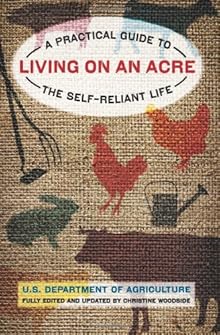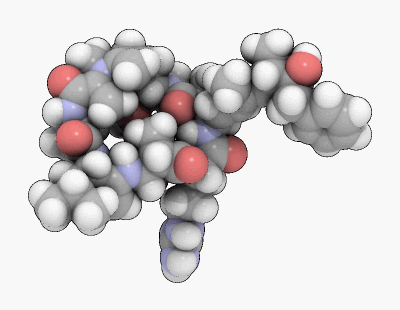Living On An Acre 2nd edition: A Practical Guide to the Self-Reliant Life
U.S. Department of Agriculture Fully edited and updated by Christine Woodside
Lyons Press, © 2010
Guilford, Connecticut
ISBN: 978-1-59921-885-4
Originally published as Living on a Few Acres, and published in 1978, the original of this book was published to provide practical information and assistance to the back-to-the-land movement. This new edition is intended for the same audience although it focuses on smaller acreage. Living on an Acre walks a fine line between being encouraging and cautionary. It opens with a chapter titled “Pluses and Minuses” and the sub-section “Face the Realities” opens with a checklist:
- Do you want to be a part-time farmer on a few acres and keep a full-time job in town?
- Can you find a farm that suits your needs in a place where you are willing to live?
- How much will it cost? If more than your savings, can you obtain financing?
- Do you have the knowledge and skills needed to operate a small farm?
- What about financing the production process?
- How and where will you sell your produce?
When I worked off-farm, back in the day, I frequently found myself driving 5000 kilometres (3100 miles)/month—which drove me crazy. But the income paid for school supplies, utilities, and (of course) the ever increasing price of gasoline and car repairs. The insanity of working to afford the transportation costs of working is what lead us to the joyous moment of getting rid of our car and joining the Victoria Car Share Co-op.
I've considered the question of low farm incomes and have long wondered why farms don't take more of the process into their own hands. Selling, as we did, our production directly to the public through farmer's markets and the connections we made there, allowed us to receive a far more reasonable return. There were problems; getting up at 5:00 am to drive an hour and a half to Vegreville to have our chickens and turkeys processed (it has to be done at a licensed and inspected facility in order to be able to sell to the public rather than home use). The butcher we liked being forced out of small animal butchering by the lack of return, meaning we had to haul lambs to a abattoir we didn't really like in order to keep selling them. But, we could set a fair price for free-range animals and keep more of the money in our hands. And we ate like kings. But the loss of small, local slaughter operations isn't mentioned in Living on an Acre.
One of the great things about this book is the practical information it contains. How much land is needed for pasturing a horse? What are the housing requirements for goats? Should you build your own house? These are questions addressed here by the various writers. The must-read chapter is Growing and Raising: How to do it. The topics covered are great—from growing fruit trees, to nursery operations, to raising small and large stock, and even vacation farms. Traditional and non-traditional ways to provide yourself with an income get a good overview/introduction. The only lack is in marketing instructions. The sections on raising rabbits and chickens would be good reading for anyone contemplating raising these animals in the city.
Overall, this is a book that provides an introduction to many of the problems and concerns with moving to a rural life. The chapter The big picture offers short (often too short) essays from people who have made the transition. But Living on an Acre does offer the information you need in order to answer the questions the book ask. At the end of it, you'll have a better idea whether rural life is for you.






